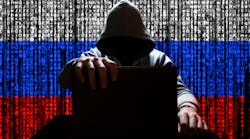According to our 2022 Worldwide Threat Assessment, the rise in global instability, violence and crime continues to present new and pressing security challenges for businesses and organizations. On the heels of a once in a hundred-year global pandemic, the world is now in the midst of its first large-scale interstate war involving a major power in over 30 years. These extreme events that were previously thought to have been things of the past have returned with a vengeance. The clustering of such events speaks to the covariate nature of risk in today’s world. From geopolitics to the digital realm, the COVID-19 pandemic has ushered in an era where bad actors at both the state and substate levels are taking advantage of uncertainty.
On the international stage, Russian leaders are seizing on the pandemic-driven state of flux. Following America’s ill-executed exit from Afghanistan, it cemented the view of revanchist powers—including China, Russia, and Iran—that the U.S. is no longer the world’s police and that now is the opportune moment to reshape the map and regional security dynamics before it is too late. The relative peace and stability that American hegemony fostered after World War II, and especially in the post-Cold War period, is very much in question. However, Russia’s disastrous invasion of Ukraine, coupled with the swift and coordinated use of sanctions by the West, has shown the world that international alliances and institutions remain relevant.Global Upheaval
While the norm of territorial conquest is now being broken, the current geopolitical environment is opening the door to nuclear proliferation being the next major norm to potentially be broken. In addition, in this new power void, regional powers will compete and dominate their respective areas. Iran and China continue to be key players in this space, and their actions in the coming years could have lasting consequences for global security and trade.
On the digital front, the remote working revolution and economic realities that were spurred by the pandemic accelerated the pace at which cybercrime has afflicted businesses and individuals. Despite unprecedented law enforcement action against cybercriminal groups in 2021, new innovations, vulnerabilities, and geopolitical tensions portend more complex and persistent ransomware attacks. In a similar vein, the January 2022 Crypto.com hack, in which over 34 million dollars of Bitcoin and Ethereum were stolen, highlights the sophistication of highly motivated cybercriminals. In what was likely a supply chain hack, criminals were eventually able to circumvent industry-standard software access controls to steal users’ money, leaving the victims without legal recourse. While cryptocurrencies have seen a marked decline in value in recent months, they remain a top target for cybercriminals due to their anonymity and wide acceptance.
Advances in technology have also made their way to civil conflicts, as well as to everyday criminal organizations. In December 2021, pictures of 3D-printed weapons from Myanmar’s civil war began to surface, marking the first time that these DIY weapons have been used in combat. Now having reached maturity, they will make it easier for malicious actors—from extremists to gang members—to acquire increasingly lethal and reliable weapons. With the recent string of mass shootings in the U.S., if a ban on assault rifles was ever implemented, this could drive individuals to 3D-printing as a way to acquire these types of weapons cheaply and easily, adding another variable into the gun control issue.
The uptick in crime linked to the COVID-19 pandemic is manifesting across different geographies in different ways—some more violent than others. While there are country-specific factors at play, such as the socio-political environment in the United States, economic distress, and general uncertainty were universal contributing factors. In particular, the homicide rate in Mexico continues to break records year after year, driven by cartel violence, corruption, and competition for control of trafficking routes. Violent and non-violent crime rates are unlikely to return to pre-pandemic levels within the next few years, especially in underdeveloped nations where the rule of law is weak, and the economic recovery is projected to be slow.
Travel Risks
So, what can be done in the face of such risk? When it comes to traveling to or operating in, an austere environment, have a plan—and not just in case of emergency. It’s critical to take proactive steps to mitigate risk up-front. This could include contacting a trusted, secure transportation partner for overland movements and traveling with a satellite phone where feasible in case of cellular network disruptions, or working with a vetted duty of care provider with in-country capabilities.
When traveling to countries with no expectation of electronic privacy or increased risk of cybercrime, always use a secure VPN to connect to any WiFi networks, especially in public spaces, and consider utilizing a burner phone. While extra caution should be taken when traveling, it’s also important to manage and enforce the same network and digital security protocols for those working remotely as in a hardened enterprise environment.
Finally, consider physical security assessments for corporate offices to gauge weak spots in case of an active shooter, bombing, or other emergency scenarios, and prioritize making necessary changes. As with any crisis planning, your emergency response plans are only as effective as your communication of those plans—ensure the details are distributed among your workforce and conduct exercises with the key stakeholders to better prepare for such emergencies.
In an increasingly unpredictable world, planning ahead for both known and unknown risks is critical to help minimize operational disruptions and protect people and other assets.






